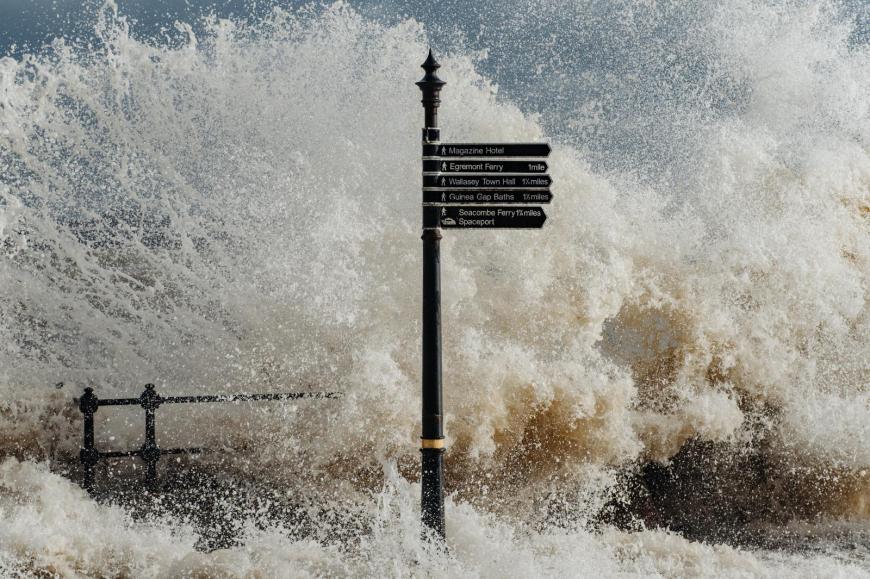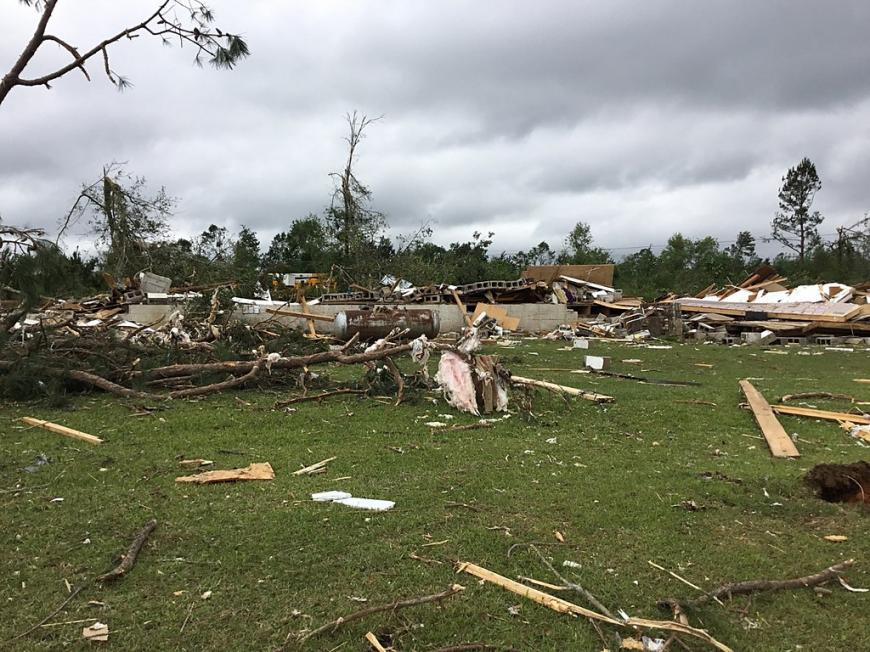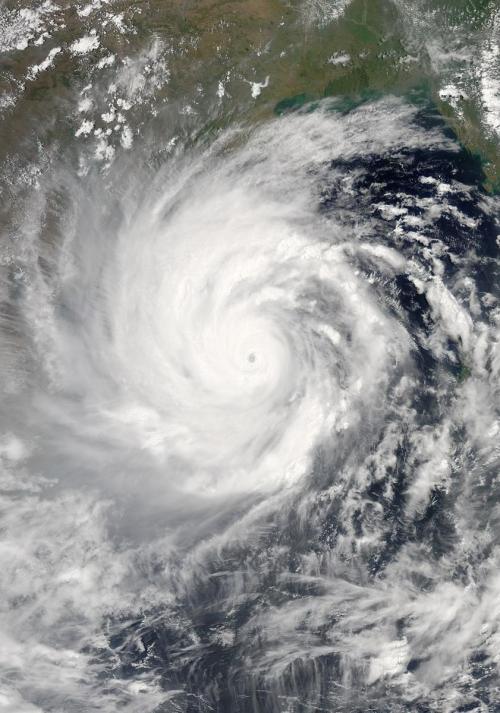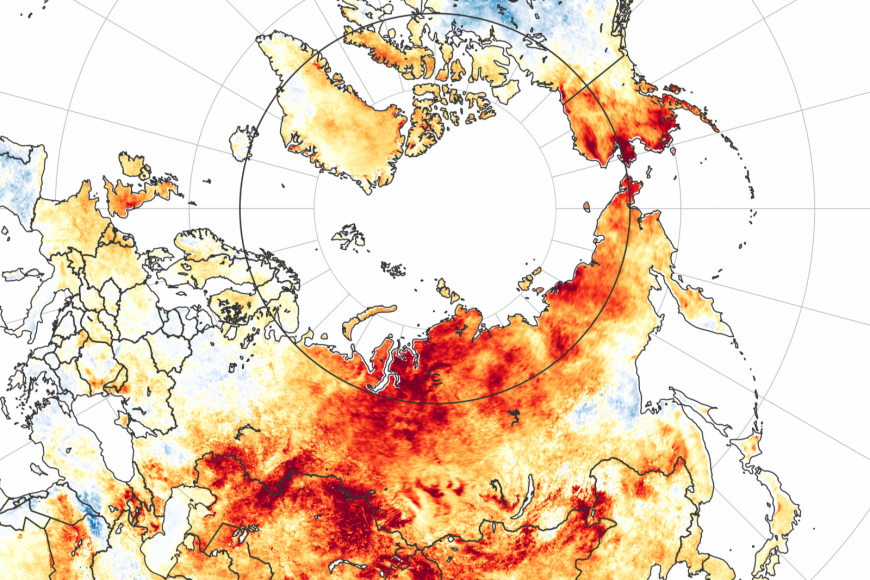
While the pandemic will dominate discussions of 2020, the world has experienced a huge number of extreme and record-breaking weather events, many of which had dire consequences and effects that will extend well into the future. Simultaneously, global warming has continued unabated, with 2020 likely to be the near the warmest year on record. In this article, we’ll explore a sample of the biggest weather events of the first half of the year – from storm Ciara to the East African floods. Further articles, focussing on the July to December period, will be released soon.
Australian Bushfires: Intense heat and drought contributed to huge bushfires across many parts of Australia during the Austral summer. By January 14, near the bushfire peak, an estimated 46 million acres were either burnt or burning on the continent, resulting in the loss of dozens of lives, hundreds of millions of animals, thousands of homes destroyed, and habitats scorched. The intense heat and massive burn area created a cloud of smoke 3 times larger than anything previously record, reaching heights of up to 35 km (source).
Jakarta Flooding: Overnight rainfall of nearly 400 mm resulted in severe flooding around Jakarta, Indonesia, causing the deaths of 66 people and displacing more than 60,000 on January 1st.
Storm Gloria: In Europe, storm Gloria wreaked havoc across parts of Spain and southern France. The system was blamed for the deaths of 4 people in Spain, while an associated storm surge reached up to 3 km inland around the Tarragona province.
Global Heat: Surface air temperatures for the month of January were the warmest on record, just edging out the previous record set in 2016, according to the Copernicus dataset.
Record Rainfall: It was the wettest February on record in the UK, according to the Met Office, with well over twice the normal amount of rainfall during the month. It was even the 5th wettest of any calendar month. A strongly +ve NAO swept several powerful storms across the British Isles, resulting in repeated bouts intense precipitation and widespread flooding.
Storm Ciara: In a month dominated by storms, Ciara had the largest effects across Europe. Arriving on the weekend of the 8th and 9th, Ciara moved through Northern Europe, causing 13 deaths and damage from Ireland, up to Norway and down to Italy. The strong jet stream winds associated with the storm also contributed to the fastest subsonic flight from New York to London, 4 hours and 56 minutes.

Winter Warmth: Moscow, Russia, had its first winter averaging above freezing on record. The mean temperature for December, January and February was +0.2°C, 6.3°C warmer than average. City authorities even brought in artificial snow for their New Year celebrations.
Australian Bushfires End: The horrific Australian bushfire season came to an end in March. The death toll stood at 34, in addition there were also billions of animals killed and thousands of homes destroyed. The 2019/2020 bushfire season has been termed “Black Summer”. It was also Australia’s second hottest summer on record, beaten only by the previous summer.
Global Heat: According to NOAA, it was the second warmest March on record globally. For South America and Argentina, it was the warmest March ever recorded.
Easter Tornado Outbreak: On the 12th and 13th of April, an estimated 140 tornados touched down across 10 different states in the south-eastern United States resulting in over $3 billion in damages. The outbreak was the deadliest since 2014 with 32 fatalities recorded. The strongest tornado, a 3.6 km wide high-end EF4 in Mississippi, was responsible for 8 of those deaths.
 (Tornado damage in Carson, Mississippi. NWS Jackson, MS, Public domain, via Wikimedia Commons)
(Tornado damage in Carson, Mississippi. NWS Jackson, MS, Public domain, via Wikimedia Commons)
Global Heat: According to the Copernicus dataset, April 2020 was the joint warmest (with 2016) on record. Recording breaking heat was noted in the Caribbean (NOAA), while exceptional anomalies were also beginning to develop across parts of Siberia, a sign of the incredible heat to come.
Cyclone Amphan: One of the most powerful north Indian Ocean cyclones on record, super cyclonic storm Amphan reached a minimum central pressure of 920hPa and maximum sustained winds of 160 mph. Despite weakening before landfall in west Bengal on the 20th, Amphan affected a large region from the Indian state of Odisha to Bhutan. The cyclone resulted in the loss of 128 lives and caused $13.8 billion of damage, making it the most costly north Indian Ocean storm on record, and the most costly of tropical cyclone of 2020 overall.
 (Super Cyclone Amphan. The National Aeronautics and Space Administration (NASA), Public domain, via Wikimedia Commons)
(Super Cyclone Amphan. The National Aeronautics and Space Administration (NASA), Public domain, via Wikimedia Commons)
Locust Swarms: Do you remember biblical scale locust swarms from 2019 and 2020? I suspect the memories have gotten lost in the turmoil of 2020. These huge locust swarms destroyed 10s of millions of hectares of cropland and pastureland from the horn of Africa, through the Arabian Peninsula and across to northern India. Partly due to combative measures being hindered by COVID-19, these huge and damaging swarms didn’t begin to significantly decline until May of 2020.
East Africa Flooding: If dealing with locust swarms wasn’t enough, east Africa suffered under deadly and widespread flooding in Spring 2020. The floods caused 453 deaths in total, with Kenya (237) and Rwanda (97) most strongly affected.
Sunny and Dry UK: After experiencing the wettest February on record, Spring 2020 was the sunniest on record and one of the driest too. Prof. Liz Bentley, chief executive of the Royal Meteorological Society, commented:
“It’s unprecedented to see such a swing from one extreme to the other in such a short space of time. That’s what concerns me. We don’t see these things normally happening with our seasons.” Source
Global Heat: According to the Copernicus data, May 2020 was the warmest on record for the planet, 0.63°C above the 1981-2010 average. Once more, Siberia experienced the largest anomalies, up to +10°C
Exceptional Arctic Heat: The continued heatwave across the Siberian Arctic reached a staggering peak in June, with 38.0°C recorded Verkhoyansk, the warmest temperature ever witnessed within the Arctic circle. Widespread recordings of >40°C also occurred. The heat allowed for wildfires to develop widely and caused a rapid loss of sea ice along the Laptev and East Siberian Sea coasts.
 (Eurasian Temperature Anomalies. NASA)
(Eurasian Temperature Anomalies. NASA)
China Flooding: Intense rainfall caused severe flooding across 26 provinces of southern China, with up to 81 lives lost and 744,000 people displaced.
Global Heat Continues: According to the Copernicus dataset, June 2020 was the joint warmest on record. Numerous maximum and monthly records were set across eastern and northern Europe.
The first half of 2020 brought record-breaking extremes across much of the planet. However, things were about the kick into another gear in the second half of the year. Severe flooding spreads to many regions, the Atlantic hurricane season goes into overdrive, wildfires make headlines across the world and the UK gets more extremes too. All this, and more, will be discussed in the follow-up articles.
Loading recent activity...